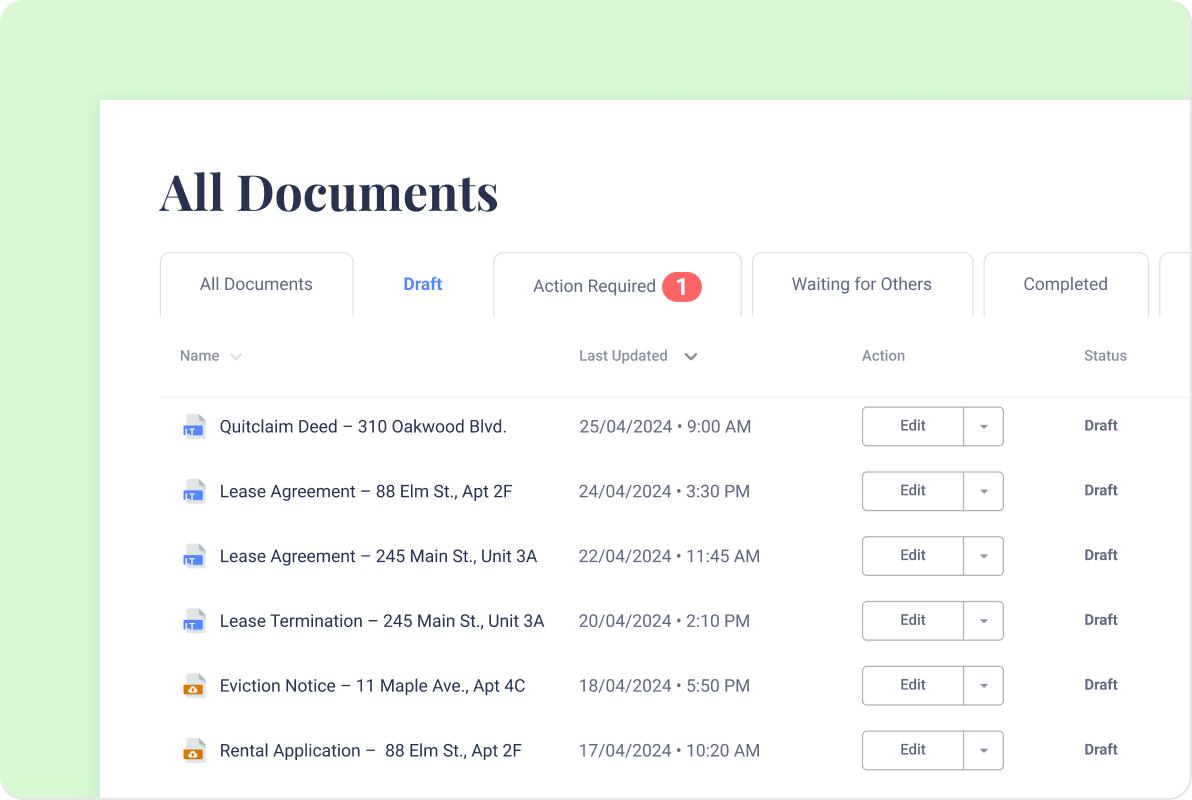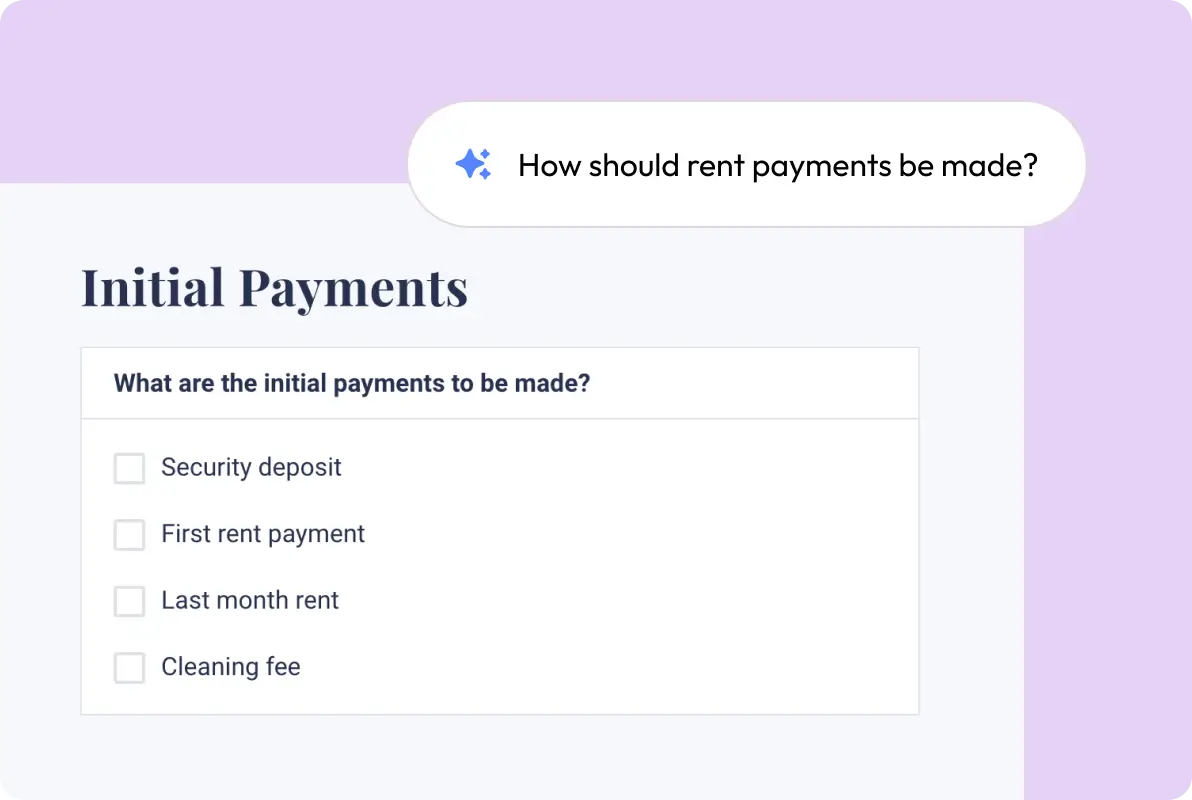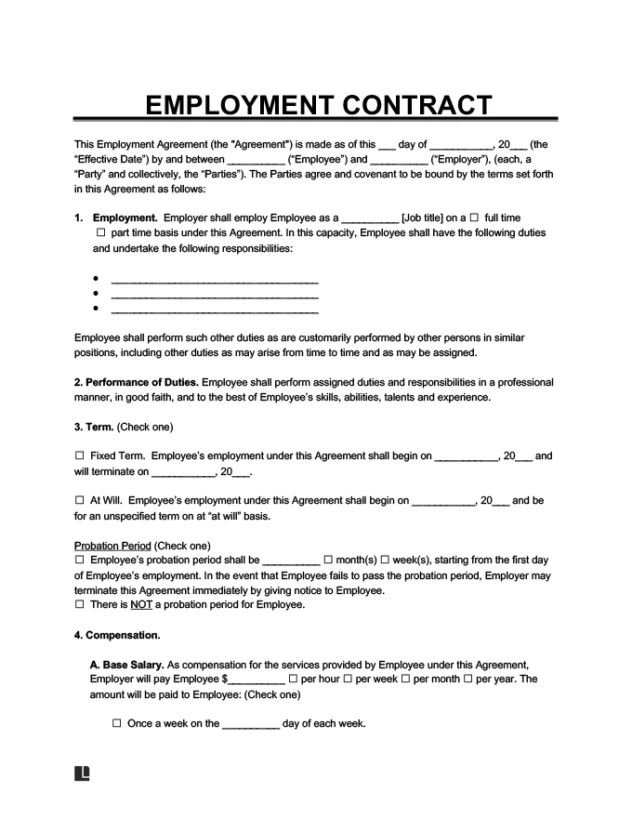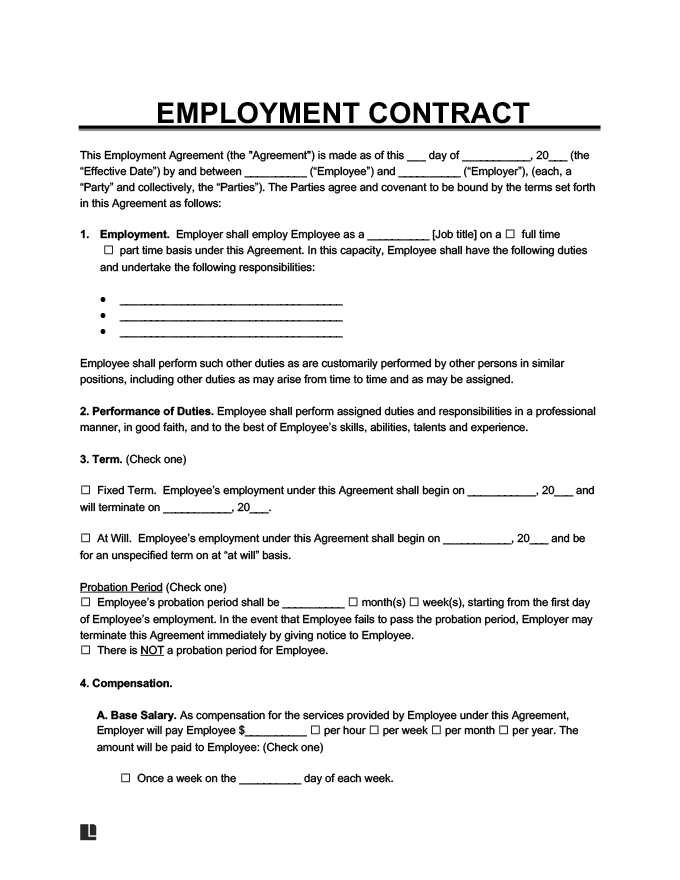What Is an Employment Contract?
An employment contract is a legal agreement between an employer and an employee. It outlines the employee’s responsibilities, job duties, and compensation and the employer’s expectations.
Before creating an employment agreement, it’s a good idea to ask the candidate for an employment verification letter to confirm their work history and income.
Our employment contract template makes it easy to draft this agreement and ensure that all important details are included.
Employment Agreement vs. Independent Contractor Agreement
An employment agreement is a contract between an employer and an employee that outlines the ongoing relationship, while an independent contractor agreement specifies the services for a specific project.
Unlike employment agreements, independent contractor agreements don’t provide benefits or require tax withholding. They focus on the scope of work, deliverables, and payment for specific tasks, helping companies manage various tax obligations and legal responsibilities.
What Does an Employment Contract Include?
An employment contract will identify the following essential elements:
- Employee Details: Identifying information for the employee, including address, phone number, email address, and any other demographic information.
- Responsibilities: Title and description of employee’s role/s and day-to-day responsibilities.
- Compensation: Amount paid per hour, week, or month, including overtime, bonus(es), commission, and the compensation schedule.
- Start Date: When the employee will start working for the employer.
- Duration of Employment: The length of time an employee agrees to work—either for a set term (e.g., 1 year) or indefinitely, with options for extension if needed.
- Benefits: Details about disability protection, health insurance, vacation, sick days, paid time off (PTO), maternity leave, and other benefits.
- Probationary Period: The employee is essentially “on trial” and may be terminated if deemed unsuitable.
- Termination: The reasons why the employment relationship may be ended.
- Work for Hire Clause: Anything created by the employee at work belongs to the company.
- Data Protection: This will give the rules and procedures regarding the company’s data privacy policies. The employer must ensure they abide by the government’s Privacy Act.
How to Write an Employment Contract
A strong employment contract sets clear expectations and establishes a productive relationship. Here are the steps to ensure your contract is comprehensive, fair, and legally sound.
1. Provide Initial Party & Job Details
The initial details contain the employee’s and company’s names. You can also include the date you’re signing the agreement. You may need to note if the contract is created in one state while the employee will be working in another.
The details should also include the employee’s job title and a description of their duties. List the employee’s work location and hours, especially if they differ from the company’s main office.
2. Determine Employment Length
In this section, you explain whether the employment will end on a certain date.
You can also state if there is a probationary period and how long it will be. Most probationary periods last 90 to 180 days. This time allows the employer to evaluate the employee’s skills and performance to decide whether they should stay on the team.
3. State the Compensation
Clearly outline the employee’s salary or pay, specifying whether it’s calculated per hour, week, month, or year. Be sure to include a note stating that the employee’s pay will be subject to deductions for Social Security, federal, state, and local taxes. This helps ensure compliance with tax laws and sets clear expectations for take-home earnings.
4. Explain Overtime Pay & Additional Compensation
Compensation should also include overtime, commission, and other compensation. Be specific when listing these extra compensation types. For example, you should specify the overtime amount and whether it’s based on hours worked in a day or a week. You can also explain if the employee will get a commission for the services they perform (e.g., 20% of all sales completed).
5. Highlight Expenses
If your employee has work expenses, state whether the company will reimburse them and explain the process for repayment. This is common for employees who travel or attend business meetings.
Example: The Employer will reimburse the Employee for the following reasonable out-of-pocket expenses incurred in furthering the Employer’s businesses: entertainment, travel, and meals. Before the Employee receives reimbursement, they must provide an itemized account of expenditures pursuant to the Employer’s policy.
6. Explain Time Off Provisions
If your workplace offers specific paid days off, such as vacation time or personal leave, include them in the contract. Your employment policies may also recognize local holidays beyond federally mandated ones.
Some states and cities have rules around overtime, sick time, and time off that fall under an employee’s rights. For example, in Nevada, private employers with 50 or more workers must provide PTO. In California, most employees who work at least 30 days a year are entitled to paid sick leave. Ensure your employment terms follow all relevant state and local laws.
7. Provide Disability Provisions
Some states offer temporary disability payments through state programs if an employee can’t work due to illness or injury. An employment contract should explain how to qualify for these benefits. It should also state if the employer will provide extra support during the employee’s leave.
Employers usually don’t have to provide disability insurance but can offer it as a benefit. If your state has a disability program, let employees know their rights and how to file claims. You can also explain if employees can work part-time or take a different role while on disability leave. Employees may get reduced pay during disability leave, so check your state’s exact rules for details.
8. Determine Termination Protocols
State how much notice you and the employee must provide before ending the job or enacting a contract termination. You can also add a rule requiring notice if you terminate the employee without cause.
9. Decide on Severance
Decide if an employee who is terminated without cause will receive severance pay. Clearly state the amount and any included benefits.
This section should include a requirement for the employee to return any company property. You can also decide if you will release the employee from confidentiality and non-disclosure agreements upon separation.
10. Write Miscellaneous Terms
If there are other terms to include, list them at the end of the contract. These could cover attorney fees for litigation, the choice of arbitration or mediation, and where legal disputes will be handled.
- Confidentiality: Similar to data protection sections, confidentiality sections cover how the employer plans to safeguard any employee information.
Documenting clear expectations, job responsibilities, and employment agreements allows employers to discipline and fire employees who do not meet work performance standards.
An employment contract offers legal protection to both an employee and an employer. If a dispute arises, both parties can refer to the original terms agreed to at the beginning of the working relationship.
By drafting your own employment contract today, you can avoid mistreatment and legal repercussions for both parties.








